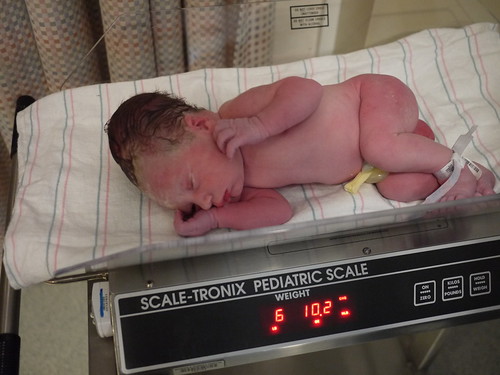Hace poco, un amigo que me pasó y le pedí el SRC para copiarlo aquí, y que también se difunda su mensaje sobre los vendedores OEM y Microsoft que se ven forzados por su monopolio ante las firmas digitales que distribuye o distribuirá VeriSign para firmar el hardware, como en un post hace tiempo lo comenté.
Voy a intentar explicar esto, no para los lectores de siempre, sino para una persona que sabe solo prender el microondas.
Hace algunos meses, se esta comentando y barajando la posibilidad, de que Microsoft, obligue a los fabricantes como: HP, DELL, Lenovo, Samsung, etc, a bloquear sus equipos para que solo puedas usar Windows 8.
Esta tecnologia creada por Intel, son los BIOS UEFI, esos que habras visto, que son graficos, con mouse, como si fuera un windows 98, bueno, eso son BIOS UEFI.
Las nuevas PC, mothers, notebook, laptop, netbook, AllInOne, van a tener posiblemente ese BIOS, por sus mejoras técnicas y usabilidad mejorada que tiene, el BIOS UEFI.
El UEFI BIOS, trae consigo, una utilidad llamada "secure boot". Esta funcion, permite al estar activada, que SOLAMENTE sistemas operativos (Windows 8), firmados (con una firma que se le compra a Microsoft en caso de quererlo), inicien en tu PC.
Solo Windows 8 de momento posee estas firmas
Esto quiere decir, que si compras una PC, notebook, etc, con UEFI BIOS, y dejás "secure boot" activado, esa PC, solo va a iniciar un sistema Windows 8, que es el unico que soporta esa caracteristica.
Vos me dirás, pero eso que tiene de malo?, bueno, mucho. El UEFI BIOS lo que hace es impedir la carga de cualquier cosa, sistema, driver, programa, etc, que no este firmada por Microsoft con esa firma especial, por lo tanto, asi como previene el malware (virus, troyanos, etc) en la carga del sistema, previene que otros sistemas se ejecuten en el, o tu driver, tu programa preferido de musica, lo que sea, no va a andar!.
Microsoft se excusa en que esto es una funcionalidad de seguridad, para decir que esto no es monopolio, cuando si lo es, porque?, te explico.
Todas las empresas, como HP, DELL y las antes mencionadas, quieren tener el logo y sticker de Windows 8 certificado en sus cajas y PC, para eso, Microsoft obliga, como algo excluyente, que "secure boot", este activado si o si, que quiere decir?, que si compras una PC o algo, con Windows 8 y tiene sticker o logo, no va a poder iniciar un Ubuntu Linux, OSX o lo que quieras vos.
Si bien recientemente (noviembre del 2011), HP y DELL, las únicas, salieron a decir que iban a dejar esta medida para poder sacarla, no es seguro que eso paso, no fue un comunicado firmado ni nada que se los impida y Microsoft esta presionando para que esto sea una realidad absoluta, porque?, facil:
Con esta medida, Microsoft se asegura que cualquier PC, notebook moderna, solo funcione con Windows 8, y NO puedas instalar otra cosa, Windows 7, XP, Ubuntu Linux, DOS, lo que quieras, no va a andar, creeme.
Que podes hacer vos? para que no te quiten la libertad de elegir y no ser estafado?, aclaro antes que nada, esto NO tiene que ver con Linux, no el comunismo ni nada similar, es un aviso que nadie dan en diarios como clarin.com, infobane.com, tn tecno, etc (soy de Argentina).
Que pasa con las tablets, smartphones y Ebook Reader?
Buena pregunta, y no está de mas explicarlo. Según Microsoft, el requerimiento para PC, notebook que usan CPU como Intel, AMD, de esa clase, los llamados x86, por su arquitectura, deben tener SI o SI activo el secure boot desde el inicio, pero no indican si debe estar bloqueado, lo que si podría pasar de todos modos.
Ahora bien, para arquitecturas ARM, asi se llama lo que usan de CPU las tablet, smartphone, netbook chinas, etc, especifica que ademas de activo por defecto, debe estar bloqueado, esto quiere decir, que si compras una tablet, netbook china ARM, smartphone o algo que no sea x86 y traiga Windows 8 con el logo, de por vida eso que compraste deberá usarse con Windows 8, no podrás poner ni sacar nada, como si de un Iphone se tratase.
Medidas para que no te estafen
1.- Cuando vayas a comprar tu PC, a donde sea, asegurate que si trae UEFI BIOS, dentro de el, se pueda desactivar la opcion de "secure boot"
2.- Si compras o te quieren vender una PC o notebook con el "secure boot" habilitado y no se deja cambiar, te estan estafando!, podes denunciarlos!. No vas a poder instalar tu amado Windows 7, ni XP ni nada.
3.- Si trae el logo de Windows 8, asegurate bien lo que dice el primer punto, si el vendedor se niega a probartelo o no te asesoran, no compres!, asi vas a cortar el circuito mafioso de Microsoft y demas empresas.
Si además de los puntos antes mencionados, entendés todo esto que va a pasar y queres sumarte a una campaña para que no suceda, solo firmando de forma anonima, debés poner, nombre, apellido y mail, que NO serán publicados, podes ingresar en:
Eso es una firma en la FSF (Fundacion de Software Libre), para que sus abogados y demas, actuen en contra de Microsoft impidiendo que las PC esten bloqueadas, es una ONG, organizacion sin animo de lucro.
Por si no lo sabes detectar, un bios UEFI se ve así
Recordá, que si es UEFI y tiene el logo de Windows 8, debe poder desactivarse el "secure boot", o no compres!, buscá otra marca o modelo!




 Recently, I have happily been surrounded by some folks with little (or no) experience with Linux who are now eager to learn more about both Linux and Open Source.
Recently, I have happily been surrounded by some folks with little (or no) experience with Linux who are now eager to learn more about both Linux and Open Source.
























 For some reason, the mulitouch touchpad in my laptop doesn't seem to work very well in Fedora - particularly when I try to click and drag something, the mouse just jumps all over the screen. Not a big deal, I just have to use an external mouse in order for it to be usable. I seem to have lost the one that I was using, so at the SFO airport I picked up a Microsoft wireless optical mouse. I've had a number of Microsoft products before, and I've always been impressed with the quality of their hardware - so much so in fact that I've only had it break on me once. Unfortunately, this particular mouse that I picked up had a immediate mechanical defect - the scroll wheel didn't work right. If I apply pressure to the left of the mouse, it works - but that's really annoying and it's not a 100% solution.
For some reason, the mulitouch touchpad in my laptop doesn't seem to work very well in Fedora - particularly when I try to click and drag something, the mouse just jumps all over the screen. Not a big deal, I just have to use an external mouse in order for it to be usable. I seem to have lost the one that I was using, so at the SFO airport I picked up a Microsoft wireless optical mouse. I've had a number of Microsoft products before, and I've always been impressed with the quality of their hardware - so much so in fact that I've only had it break on me once. Unfortunately, this particular mouse that I picked up had a immediate mechanical defect - the scroll wheel didn't work right. If I apply pressure to the left of the mouse, it works - but that's really annoying and it's not a 100% solution.